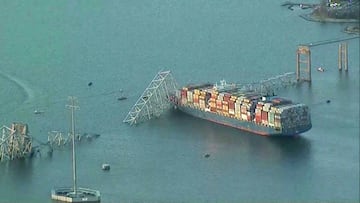What is a “loss of propulsion”? The possible cause of the Dali crash into the Francis Scott Key Bridge
With no forward thrust the crew was powerless to control the ship, drifting out of control toward its finaly destination of the Baltimore bridge.


The search continues for survivors of the Baltimore bridge disatser. A very likely cause of the accident is a failure in the boat.
“The ship notified the MD Department of Transportation (MDOT) that they had lost control of the ship and that a collision with the bridge was possible. The ship collided with the bridge causing a total collapse,” explained a report from the Infrastructure and Cybersecurity Security Agency.
President Biden on collapse of the Francis Scott Key Bridge in Baltimore, MD: "It's my intention that the federal government will pay for the entire cost of reconstructing that bridge and I expect the Congress to support my effort." pic.twitter.com/kSKziTjpey
— CSPAN (@cspan) March 26, 2024
Problems on the boat
A loss of propulsion refers to the complete or significant inability of the boat’s engine or motor to generate enough power to move forward effectively. It’s a critical situation because without propulsion, the boat can no longer maintain control. The captain loses the ability to steer and maneuver the boat as intended, making it difficult to avoid hazards or navigate currents. The boat will slow down considerably or come to a complete halt, potentially putting it in danger of collisions with other vessels or becoming a hazard itself.
A massive container ship crashed into the main bridge of Baltimore’s beltway this morning, causing total collapse to the bridge and cutting off the city’s container port from the global ocean. At least 6 people are missing. 🧵 pic.twitter.com/GkuxD7zS3r
— Ryan Petersen (@typesfast) March 26, 2024
Related stories
A drifting boat with no control over its movement becomes a hazard to other boats in the area, increasing the risk of incidents like that seen in Baltimore.
The cause of the loss have power has not yet been explained. It can be a result of an engine failure, propeller issues, or human error.